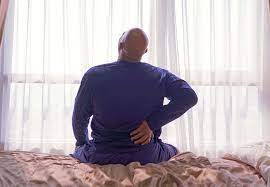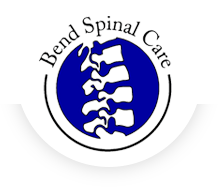Top 5 Sleeping Positions to Reduce Back Pain

It is unfortunately all too common for adults to experience chronic back pain. The source and cause of each individual’s back problems might vary, but there are several sleep-related tweaks that can be made to reduce overall back pain in most cases, regardless of the underlying cause.
Bend Spinal Care Chiropractors would suggest that there are elements of your sleep routine that are having a negative effect on the back issues you suffer from. That’s why we recommend the following sleep positions to reduce the severity or even presence of the back pain.
Fetal Position Sleep
The first sleep position prescription is to go back to basics, so to speak. It might have been a while since this position seemed appealing, so here are some tips:
- Roll from your back to your side (you have probably instinctively done this, since sleeping on your back isn’t really working to relieve the pain)
- Tuck your knees up as close to your chest as you find to be comfortable
- Allow your chest and arms to form a round, curled shape, near to your knees
- Sleep on whichever side is most comfortable for you, but be sure to switch sides often
Who does the fetal position benefit most?
Those who suffer from herniated discs might find the curved nature of the fetal position to be a relief. Sleeping this way allows for more space between the vertebrae that are bothered.
Side Sleeping with A Supportive Knee Pillow
This sleep position is often embraced by expectant mothers, but it can provide relief from all types of back pain, beyond the pains that accompany pregnancy. This is an excellent first option if you cannot determine what is bothering your back, but you know you could adjust and potentially sleep more restfully.
Simply roll to your side and place a pillow in between your knees. You may want an additional pillow under your waist if there is too large a gap between the mattress and your waist. Your body will feel comfortably supported from all sides, while your back gets the chance to feel less pressure overall.
Who most benefits from side sleeping?
This is a position that can provide relief to anyone who is experiencing alignment issues that are causing poor sleep and back pain.
Recliner Position
Many adults find that some of the most restful sleep they experience is done in their favorite recliner chair. Sleeping in a chair of any kind is, in most cases, not advisable, but you can attempt to mimic the pain-easing effect that chair sleeping can have. You can do this through the use of supportive adjustable beds or mattresses. The idea here is that an angle is adjusted between the hips, rear end, and thighs of the individual with back pain.
Who does this position help?
Those who suffer from a specific condition called isthmic spondylolisthesis will likely experience a reduction in pain. This is because the painful overlapping that this condition causes can be lessened by the aforementioned angles created by the elevated legs.
Supported Stomach Sleeping
Stomach sleeping is a method to reduce back pain for certain individuals. The key to this position being helpful instead of harmful, as is the rumor about stomach sleeping, is to support the pelvis and abdominal area with a pillow to alleviate stress on the lower back. Some find that they still need a pillow under their head, but others opt to use a pillow only on the pelvic area to keep their neck from straining.
Who does stomach sleeping stand to help?
Degenerative disc sufferers might find that their symptoms are lessened when they opt to try out a stomach sleeping position. This is because the space between vertebrae does not cause irritation and strain like with back sleeping.
Back Sleeping with Supported Knees
This position embraces back sleeping, but with the added benefit of a support pillow. Position a pillow underneath your knees to allow the weight of the body to be more evenly distributed. Proper alignment is not as difficult to achieve in this sleep position.
Who should try this sleep position?
This is another sleep suggestion for those with less specific back pain complaints because it can be so helpful to many who suffer from pain and discomfort as they sleep.
Still uncomfortable after trying these sleep positions? It may be time to see a Chiropractor. Contact us today to learn more about possible treatment options for your back pain. (541) 318-8627.
